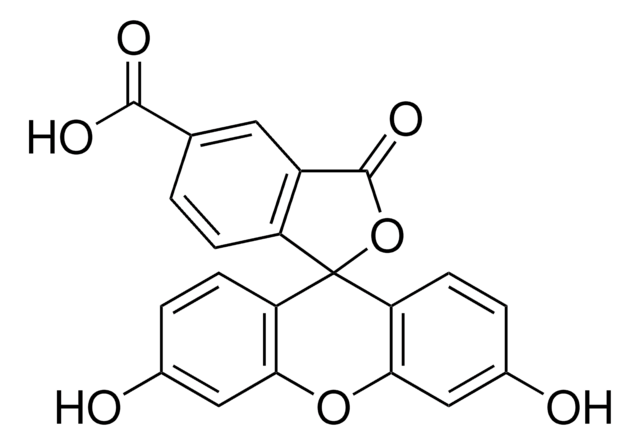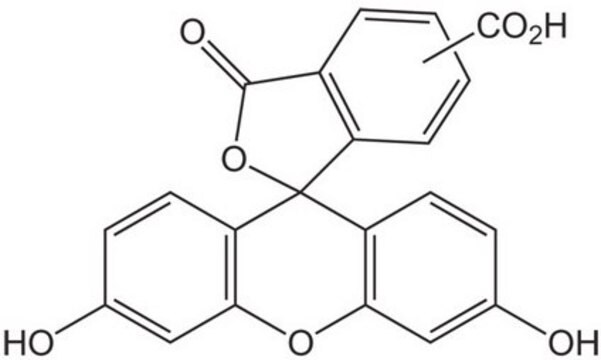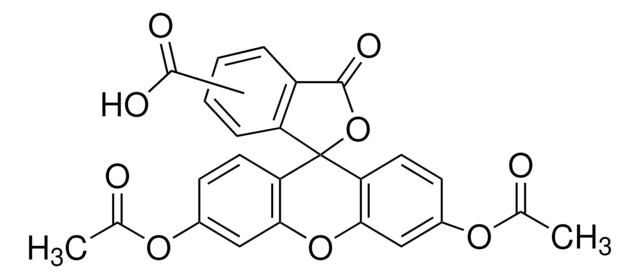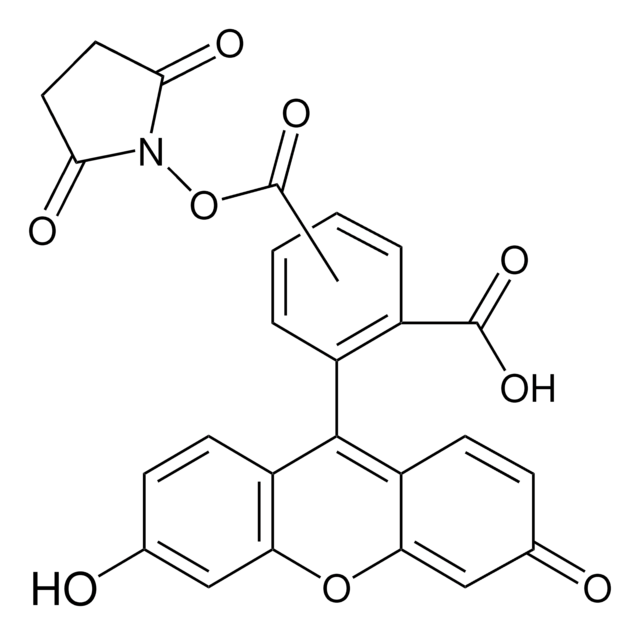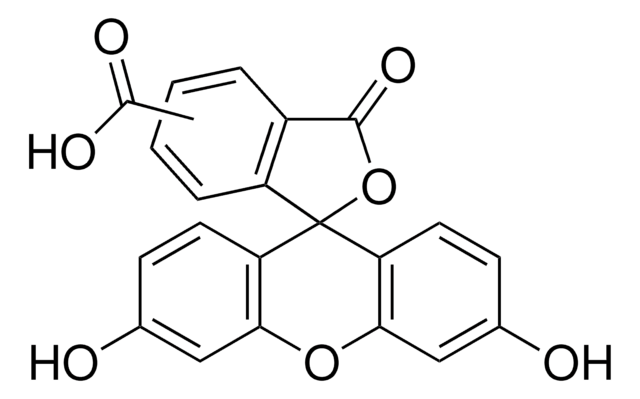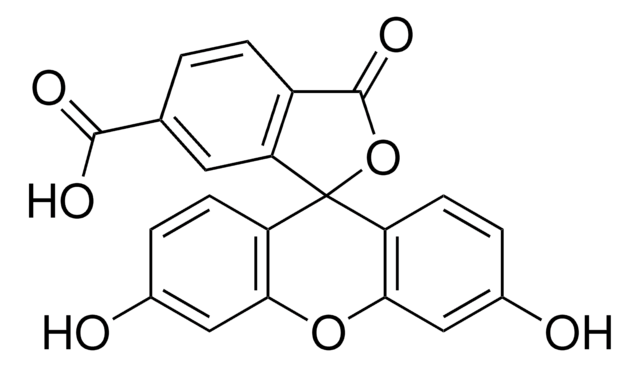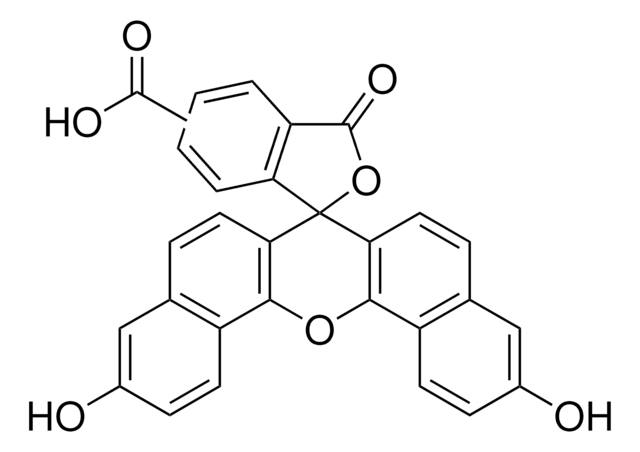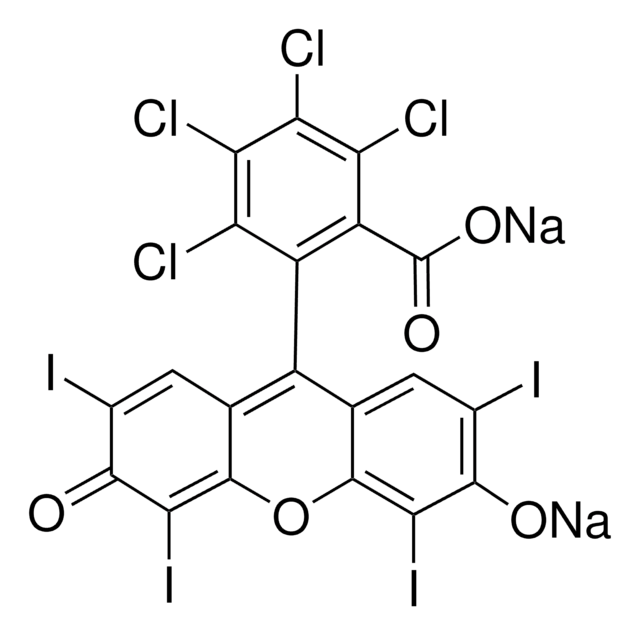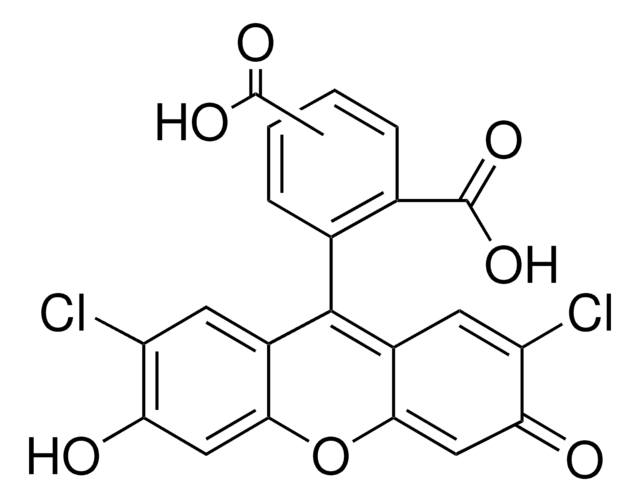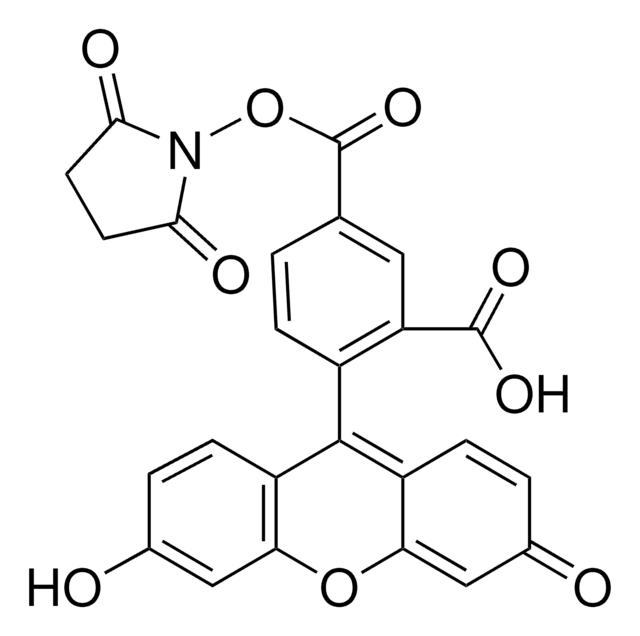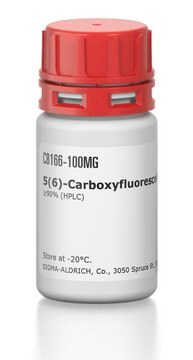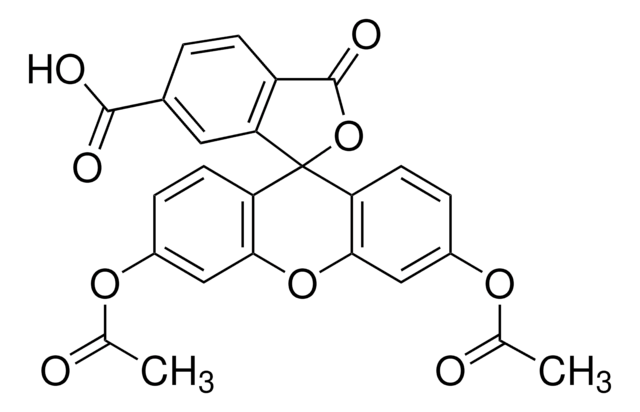21877
5(6)-Carboxyfluorescein
suitable for fluorescence, BioReagent, ≥95% (HPLC)
Synonyme(s) :
5(6)-FAM, 5,6-CF
About This Item
Produits recommandés
Gamme de produits
BioReagent
Niveau de qualité
Pureté
≥95% (HPLC)
Forme
powder
Pf
275 °C (dec.) (lit.)
Fluorescence
λex 492 nm; λem 517 nm in 0.1 M Tris pH 8.0
Adéquation
suitable for fluorescence
Chaîne SMILES
OC(=O)c1ccc2c(c1)C(=O)OC23c4ccc(O)cc4Oc5cc(O)ccc35.OC(=O)c6ccc7C(=O)OC8(c9ccc(O)cc9Oc%10cc(O)ccc8%10)c7c6
InChI
1S/2C21H12O7/c22-11-2-5-15-17(8-11)27-18-9-12(23)3-6-16(18)21(15)14-4-1-10(19(24)25)7-13(14)20(26)28-21;22-11-2-5-14-17(8-11)27-18-9-12(23)3-6-15(18)21(14)16-7-10(19(24)25)1-4-13(16)20(26)28-21/h2*1-9,22-23H,(H,24,25)
Clé InChI
BPVHBBXCESDRKW-UHFFFAOYSA-N
Vous recherchez des produits similaires ? Visite Guide de comparaison des produits
Catégories apparentées
Description générale
- It has 2 wavelengths for maximum absorbance (465 and 490nm).
- And its fluorescence emission, at 515nm(max.), increases as a function of pH in the physiological range of 6-7.4.
Application
Autres remarques
Code de la classe de stockage
11 - Combustible Solids
Classe de danger pour l'eau (WGK)
WGK 3
Point d'éclair (°F)
Not applicable
Point d'éclair (°C)
Not applicable
Équipement de protection individuelle
Eyeshields, Gloves, type N95 (US)
Certificats d'analyse (COA)
Recherchez un Certificats d'analyse (COA) en saisissant le numéro de lot du produit. Les numéros de lot figurent sur l'étiquette du produit après les mots "Lot" ou "Batch".
Déjà en possession de ce produit ?
Retrouvez la documentation relative aux produits que vous avez récemment achetés dans la Bibliothèque de documents.
Les clients ont également consulté
Articles
Nitric oxide (NO) as a signal transporter in neurons, endothelial cells and in the immune system.
Notre équipe de scientifiques dispose d'une expérience dans tous les secteurs de la recherche, notamment en sciences de la vie, science des matériaux, synthèse chimique, chromatographie, analyse et dans de nombreux autres domaines..
Contacter notre Service technique
